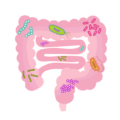Origins of the Modern Medical Model
Probably few people are aware that the present method of medical practice was formulated by the Flexner report of 1910. John D. Rockefeller, the oil magnate, had set his sights on gaining a monopoly in the drug and pharmaceutical industry. To do this he had to get rid of the competition. This consisted of natural healing modalities that included naturopathy, homeopathy, and holistic medicine, all of which were flourishing in many parts of the country. Rockefeller paid Abraham Flexner to visit all the medical schools in the United States and the information was released in the Flexner report, calling for a standardization of medical education. It ultimately led Congress to declare that the American Medical Association was the only body with the right to grant medical school licenses. It compelled the government to destroy the natural competition by regulating medical schools.
Flexner had visited Germany and their method of medical practice was adopted for the United States. This formulated the idea that the laboratory would be specific enough to prove the diagnosis and gave rise to the concept of scientific medicine. This has become such a vital part of modern medical practice that failure to find laboratory evidence in a common appearance of polysymptomatic patients has usually come to indicate that there is really no disease. The patient is often told that “it is all in your head”. Unfortunately, it appears to assume that all the right tests have been applied. Furthermore, diagnosis of a particular organic disease depends on the constellation of the currently acceptable abnormal laboratory tests associated with that disease. Each disease is regarded as a separate entity whose specific cure must be found by detailed research. The Flexner report was so offensive to William Osler, Professor of Medicine at Johns Hopkins School of Medicine that he immigrated to England. He became Regius Professor of Medicine at Radcliffe Infirmary in Oxford and was knighted. His philosophy emphasized the clinical aspects of the patient’s symptoms and his leadership led to the bedside teaching model of British medical schools.
Using the present model, medical education requires the student to understand the complexities of each of the many diseases envisioned. Even worse, he is expected to remember constellations of symptoms and associated lab data called “syndromes”, many of which are named after the individual who first described it. The next stage of education after graduation is as a hospital resident where the concept of specialization is encouraged and the present medical model is reinforced. It also discourages an entry into primary care, often seen as a failure to ascend the ladder of specialization. It has given rise to the disproportion of primary care compared with specialists and has created a state where the emergency room has virtually taken the place of the family doctor.
Where We Are Now
The published statistics are worrying. A typical visit to a doctor consumes an average of 121 minutes of the patient’s time. This includes 37 minutes in travel and 64 minutes waiting for care. The average time spent with a physician is 20 minutes at most and the national average for visits to doctors is around four times a year. For a young person to contemplate going into medicine, the path to being a doctor takes a minimum of 12 years after graduating from high school. Not only is the process challenging academically, it requires perseverance to complete such a long course of training. Some specialties can take five or more additional years of training. In addition, the financial debt is often overwhelming. Of the nearly 956 million visits that Americans made to office-based physicians in 2008, 51.3% were to primary care practitioners.
The Current Medical Model Breeds Diagnostic Uncertainty
Researchers at Johns Hopkins University School of Medicine have explored the frequency of diagnostic uncertainty by providers. They reported that 52% of physicians and 64% of nurse practitioners/physicians assistants admitted that they made a mistake daily. Responders included 633 physicians and 118 nurse practitioner/PAs. Previously published data had stated that 10-15% of all patient encounters included diagnostic uncertainty. In the light of these facts, what can a graduate from medical school expect? If he/she becomes a primary care physician and the allotted time with a patient is only 20 minutes, what can be accomplished? If a clinical problem appears to be complex, referral to a specialist is a way out of the dilemma. Thus, if a patient has been referred to a neurologist and asks a question concerning intestinal symptoms, the neurologist states that that is a question for a gastroenterologist, resulting in further referral. With the common incidence of complex problems, the time constraints have also been imposed on the specialists. Furthermore, postgraduate education, apart from an occasional conference, is from the pharmaceutical representatives, each explaining the “miraculous” effects of the latest drug. Before I came to the United States, I was in a family medical practice in a small country town in England. I can still remember that when a representative had called on the practices within the town, the local drugstores registered a large number of prescriptions of the particular medication whose clinical benefits had been presented to the physicians.
It is hardly surprising that, after a rigorous training, a young physician who chooses primary care as his life work would tend to become bored from the daily appearance of what seems to be regarded as so many patients with “imaginary” symptoms. Perhaps after recuperating financially, specialization may seem to be an acceptable escape, thus adding to the disproportionate number of specialists to primary care physicians. Perhaps these facts are responsible for the waning interest in being a physician. Add to them the appearance of bureaucratic interference and the intricacies of electronic recording constraints, the profession of medicine seems to be less attractive than other professions. A recent report from the Association of American Medical Colleges projected a shortage of 42,600 to 121,300 physicians by 2030.
Is There a Solution?
Dr. Marrs and I believe that there is indeed a solution. We believe that the present medical model is a catastrophe and needs to be replaced. Evidence is rapidly accumulating that the core issue of disease is defective energy metabolism as defined by Selye 50 years ago. Although nutritional deficiency is by far and away the commonest way of producing energy deficiency, we now know that there are abnormal genetic influences, many of which can be resolved by epigenetic (use of nutritional elements) treatment. There are already professional organizations of holistic physicians. In 1982 I joined a medical group that came to be named as the American College for Advancement in Medicine (ACAM) and later became a member of the International College of Integrative Medicine (ICIM). Both of these organizations need to be encouraged since they are resuscitating the medical approaches that were canceled as a result of the Flexner report. Holistic medicine recognizes that healing requires cellular energy and that this can only be accomplished by attention to pristine nutrition and an epigenetic approach. It is interesting that the word “holistic” comes from an ancient word “holos”, meaning “the side of a hill where the ancients gathered herbs”.
A New Model of Medicine: Let Energy Be the Guide
In previous posts on this website we have outlined the skeleton of a new medical model by the triple influence of genetics, nutrition and stress (as defined by Selye). Even genetically determined diseases often require some form of stress to become clinically expressed. For example, diabetes has one or more genetic markers. If the genetic influence were the sole factor, one would expect the disease to be expressed at birth. However, the history of diabetes indicates that its onset is many years later and its onset is often associated with minor stress such as a cold. All diabetics are aware of the effect of nutrition. The DNA of an individual is seldom perfect but the imperfections may not be severe enough to cause functional breakdown if cellular energy is adequate to meet the stresses of life. The revised model hypothesizes that energy deficiency is the core issue of disease, thus emphasizing the wisdom of Hippocrates who, in 400 BCE, said “let medicine be your food and food be your medicine”. Our advice to a newly graduated physician would be that he upgrade the biochemical knowledge that he has acquired in medical school, with a particular emphasis on energy metabolism.
As a primary care physician, or even as a specialist, he would be most interested in the family history for indications of genetic risk. A review of the patient’s diet, including that associated with social activities, would be his next interest and he would ask a few questions to ascertain whether any form of stress added to the equation. Yes, an infection is an attack on the patient’s constitution and may be the primary problem, but body defenses require energy. With inadequate essential elements supplied by nutrition, the defense mechanisms gradually deteriorate. Their resuscitation requires megadoses of the defense supporting nutrients (vitamins and minerals).
Laboratory tests would concentrate on depicting the energy status of the patient. He would quickly appreciate that the so-called “imaginary” symptoms expressed by the patient are those of poorly energized brain cells registering their dysfunction. That is why we have hypothesized that beriberi, the classical energy deficiency disease is “the great imitator”. For example, some years ago young woman consulted me with the disease called thrombocytopenic purpura. This disease is caused by a deficit of cells that circulate in the blood, called platelets and they have an important part to play in the control of blood coagulation. The body becomes covered with tiny plebs of non-coagulated blood and a blood test shows that the platelets are deficient. She had suffered from this disease for many years, receiving conventional treatment without success. Applying the principle that there was an energy deficit in the bone marrow where platelets are produced, I treated her with a series of intravenously given vitamins with complete remission of the disease. This means that the three circles of health, genetics, nutrition and stress, if fully understood in principle, would present a simplification in the ability of a physician, or other health professional to approach a new patient. It would provide a simple “mind picture” for constructing the necessary questions to be asked after the reason for the consultation has been addressed.
We Need Your Help
More people than ever are reading Hormones Matter, a testament to the need for independent voices in health and medicine. We are not funded and accept limited advertising. Unlike many health sites, we don’t force you to purchase a subscription. We believe health information should be open to all. If you read Hormones Matter, like it, please help support it. Contribute now.
Yes, I would like to support Hormones Matter.
This article was published originally on September 30, 2019.
















This is to answer GL,s posts of Oct 4,9 and 10 and is a general statement. Notice the fall in A1c, the peg on which diabetic docs hang their hat. Notice the weight loss with thiamine deficiency (TD). That is because of failure of cellular energy. Notice the cholesterol of 271 that is falling with thiamine supplementation. Cholesterol is used by the body to make steroid (stress) hormones and is elevated to meet the stress. It is NOT the demon that has been endlessly invoked as the cause of cardiovascular disease. A low cholesterol is more dangerous than a high one. Notice the fever when thiamine was started. Fever is a defensive reaction induced by the brain and is part of the paradox. Notice that the multivitamin mentioned by GL contains a paltry 2 mg (130% of RDA). The RDAs were set by a committee of “experts” and may be OK for a healthy person taking a pristine diet but they are inadequate for the modern stressed world. Is the recognition of TD a “failure in allopathic medicine?” The answer is yes. Because of vitamin enrichment by the food industry allopathic medicine refuses to recognize even the possibility of vitamin deficiency (with the exception of vitamin D that is made in the body from sunlight activation). Too many people are being diagnosed as “psychosomatic” when their many symptoms are caused by biochemical changes in brain that represent energy deficiency. That is why the brightest athletes and students are at greater risk than people less well endowed. Why does this not make sense to docs? Because they are “educated” by the pharmaceutical detail men that visit their offices.
I’m able to eat organic steel cut oats again! My A1C came back the lowest and completely normal at 5.5! and this is after battling my supposed prediabetes for almost a decade including several months of strict keto diet a few years ago (probably depleted thiamine even more). I have always been thin (and very strong for my size) but have been losing more weight unintentionally last few years, so it’s an understatement to say that it’s been a battle fighting the blood sugar issue while eating a low carb diet. My cholesterol dropped 40 in 6 months so I’m definitely headed in the right direction although still in a high range, but I’m confident that it’ll continue to drop since I’ve only been supplementing thiamine for the last few weeks.
My white blood cell count has been running quite low (3.2 last) since 2015, but my Dr. didn’t order a cbc lab work for it concentrating on the cholesterol and glucose this time, so I asked him to order the lab work. I plan to get the blood drawn for the test after about a month or so after my continual low grade fever that came with thiamine supplementation goes away. My mysterious persistent right ear ache that I had for years went away along with nocturia. I’ll update after the WBC test result.
I’m baffled why something as important as thiamine and transketolase aren’t tested more often especially when it is well known that diabetics and elders are almost always deficient of the crucial “spark” to all energy metabolism? Is this a simple failure in allopathic medicine or a deep seeded conspiratorial topic that must be addressed?
Thank you! I suspected that perhaps you might be megadosing on Thiamine yourself to keep so sharp. : )
I’ve been telling everyone about your site including my PCP who I just saw yesterday. He is skeptical about Thiamine but I think he may get surprised by my lab result after the blood draw yesterday. He was going to include Thiamine and Magnesium tests to my blood work but I had him cancel the lab order explaining that thiamine blood serum level doesn’t always correlate to deficiency according to this site and I’m megadosing on Thiamine anyhow, including Mg that always tested (2.5) at healthy level with supplementation.
My cholesterol level was suddenly alarming 6 months ago at 271! I’ve always had high HDL but LDL was fine to keep my Tot Cholesterol in check up until that point – shocking because that’s despite eating very healthy diet (no pizza, refined carbs, sugar, etc). I now believe my thiamine reserve may have been running especially low because all multivitamin manufacturers recently drastically changed their formulations to lower daily values due to a new FDA recommendation, and my latest organic food based multivitamin (I alternate) only includes 2 mg (130%) of thiamine while previous formulas included higher amounts that probably kept me barely functional on top of my inherent deficiency. A google search quickly revealed the study (PMC3921172) that shows thiamine affecting significant decrease in cholesterol. Although I’ve only been supplementing thiamine for two weeks since 9/24, combined with my 6 month change in diet to lower cholesterol and the recent drastic difference in fasting glucose tests, I hoping it’ll show a interesting turn on my blood work that’ll help enlighten my PCP.
My headache lasted about 4 days on Allithiamine but it’s gone now. My temperature seem to continually run mild fever but I feel absolutely fine so my dosage has been increased to 200mg per day, which I plan to keep up to 4 months and possibly lower down 50mg per day on maintenance dosage eventually.
My late mother tested with the highest IQ in her school but I noticed her brain capacity was severely degraded by her 40s, and by 70s she started occasional confabulation with severe memory gaps that perplexed me. She had always suffered tremendous muscle pain since her 30s but never received a correct diagnosis despite having many MD friends. I now suspect that it was probably lactic acidosis due to thiamine deficiency, so you’re probably correct in assuming genetic factor in play.
Why such a focus on LDL?
Question 1. Don’t know !
Question 2. As we age, oxidative metabolism gradually deteriorates. Since thiamin stands at the gate to energy synthesis, using it in megadoses means that it is acting as a drug. Depending on whether the cellular machinery is not too shabby, thiamin will restore function, Dr Costantini in Italy has resuscitated Parkinson’s disease with thiamin.
Question 3. Keep the dose low until paradox gives way to improvement. There is no toxicity until the dose is astronomical. The best maintenance dose is by trial and error. Because there is probably a genetic factor in your story you will require a maintenance dose. Please write your story on H M
Hi Dr. Lonsdale,
I’ve posted the below question under an old 2017 article and worry that it may have escaped your attention so I’m posting again under this article. Also, the “Contact Us” form under this website doesn’t seem to allow any input so a web admin may need to take a look.
I’ve just bought your book after reading the above post. Reading through your articles for the last several days, I’m simply amazed that you’re in your mid 90s still with an incredible brilliant mind! I know now for 100% certain that I’ve been thiamine deficient for the last 20 years or so and my health has suffered greatly. I never suspected that I could be deficient in any vitamin because I’ve always taken the best form of mega multivitamins and shelves of supplements for years, including all forms of Magnesium, K, trace minerals, etc etc. I used to be very athletic and had an incredible memory so noticing the difference in the degradation of my health and my brain’s capacity since my mid 30’s is sadly obvious. I recently prayed to God that my memory be restored (or at least not get worse) after having a particular difficulty with my French (re)learning and piano sessions and I somehow landed on your site. I’ve been taking Allithiamine for the last few days and what I notice clearly different from Benfotimine is that it’s giving me a non-stop splitting headache which I see as a good paradoxical reaction from reading your posts. I was on Benfotimine 300mg x2/day for a week prior to that but stopped for now because it was causing diarrhea although it was helping with rest of my peripheral symptoms. I’ve been tracking my food consumption and glucose for years and noticing for the first time that my AM fasting glucose is in the low 90’s instead of pre-diabetes level. What is also amazing is that my resting heart rate that was in 80-90s have gone down significantly to 60s and no more CFS! I’m so glad that I’ve resisted my PCP for almost a decade wanting to put me on Metformin and I fought that with strict low-carb diet and of course I’ve removed sugar for many years to no avail. Now I feel a sense of hope after monitoring the improvement of various symptoms. I have a few questions for you though –
1. To what do you attribute your SUPERIOR mental health? Would you please share what supplements you personally take daily? I bought your book to gain additional insight but would love to hear your response. I’m surrounded by many people in their 70-90 with PhDs with once brilliant minds but their mental capacity are nowhere near yours.
2. With those who have lost some brain function for a while, have you seen people gaining it back after thiamine supplementation? I’m hoping my painful headache means there’s some shifting of catabolic/anabolic for an ultimate gain. Is it possible for the lost memory capacity be restored?
3. I’m going to titrate up the dosage of Allithaimine of which I’m on 50mg per day now. Next week will increase to 100 mg, etc. until 200-300mg. Will I need to be on it indefinitely for the rest of my life? What would be an ideal maintenance dosage after the noticed benefits abate or plateau?